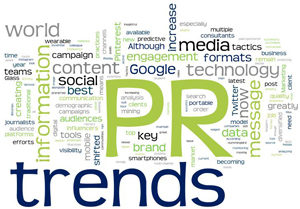By Ibiduni Banjoko
The phenomenon of influencer marketing has been around for decades. The marketing strategy runs on the psychology of influence whereby companies hire influential individuals to promote a product or service to attract and persuade their target audiences.
While traditional marketing (advertising) attempts to convince consumers to buy through mediums such as radio, billboards and television commercials, however, there is a significant shift in influencer marketing since the rise of social media, with more brands realising the potential of influencers.
According to Grin, a digital influencer marketing website, there were 2.46 billion social media users in 2017 and this number is going to rise to 3.02 billion by 2021. With consumers spending an increasing amount of time on digital channels (especially social media), the popularity of traditional marketing (advertising) is declining fast.
Corroborating the aforementioned paradigm shift in influencer marketing, Dolapo Otegbayi, Specialised Nutrition Director with over 21 years’ industry experience at Nigeria’s foremost dairy company, FrieslandCampina WAMCO, emphasised that building a successful influencer marketing strategy is all about being goal-oriented.
Speaking during the MARKETING EDGE “2021 Fireside Conversation”, the consummate marketer noted that contemporary marketing has gone beyond what it used to be, specifically stating that digital marketing has been the game changer. She also pointed out that influencer marketers have done quite well in the field of digital marketing, observing that brands even prefer them to marketing professionals.
The versatile Amazon said, “Sometimes, influencer marketers are not just brands, but individuals who have built corporate identity for themselves. If you build association with some of them they will help you build through the line solution. What they offer may be cheaper, quality and accessible more than those who charge premium. Premium is relative depending on your target market. She stated that in the past, within the competitive framework, influencers only looked at other competing PR agencies as their competitors, adding, however, that in the 21st century, there are thousands of faceless people that can offer similar or same value as them, depending on the target market.
She mentioned that segmentation, targeting and positioning are becoming part of the old and traditional ways, adding, however, that they are still the foundation of marketing. She maintained that despite the books published by professors over the years, foundation is more than what marketers need to think about in the competitive environment.
“Fundamentally, when you want to start a business, you will need to segment the market you are going for. Are you going for the corporate, individual or industry segment? You must have an idea and the first thing to think about is segmentation. Secondly, you must know who you are targeting. Is it high profile, mainstream, low earners, students, lecturers, or business people?
Speaking on positioning, she asked, “how do you want to be seen; how do you want to position yourself to your target audience; are you niche; are you premium; do you have value for money”?
On the new normal, the marketing Amazon said, “Driving saliency should be the new normal because it has replaced positioning. Strategic saliency means the level by which your brand is thought of or noticed by your target audience when they make a decision. So, find ways to promote good memory structure to improve saliency because within the marketing organisation there are many lookalike organisations around.”
Otegbayi warned that any organisation that does not connect with the fast-changing marketing world runs the risk of losing out in the highly competitive environment. “Now that the marketing environment has gone beyond traditional, how do you drive your distinctiveness in this competitive marketing environment where consumer touch points are multidimensional? Even in the bedroom, you can travel anywhere, and that is the competitive environment that we find ourselves.”







Comment
No comments found.